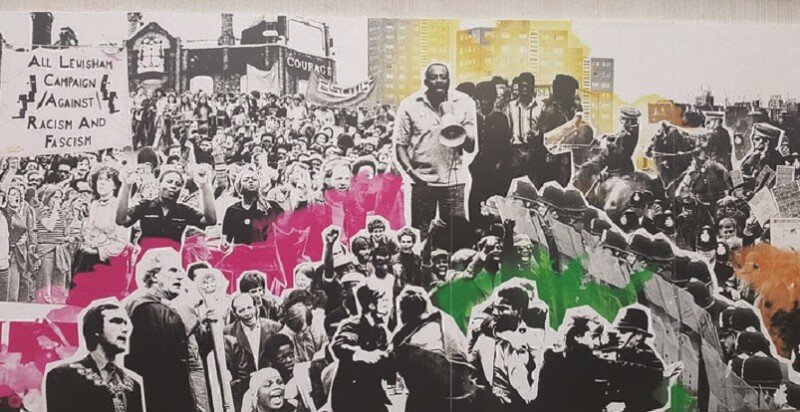The Battle of Lewisham saw off National Front
In August 1977 the National Front was defeated in a battle it would never recover from, writes Claudia Lee.
By 2pm, 46 years ago, about 500 far right extremists prepared to march through Lewisham.
The crowds of counter protesters that grew nearby in New Cross set the scene for what would become known as the Battle of Lewisham.
Attempts to have the march banned in the High Court by the All Lewisham Campaign Against Racism and Fascism (ALCARF) had failed.
It is widely accepted that the National Front chose Lewisham to march through because of its thriving black population and diverse community.
However, there is another reason suggested by historians, one that people were eager to forget.
The National Front chose Lewisham because they felt they would be accepted by so many of its residents.
Less than a year before the infamous battle, a local council by-election in Deptford saw the far right secure almost half the vote.

Together, the National Front and its breakaway faction, the National party, secured 44.5 per cent.
However, the Battle of Lewisham turned the tide of popular opinion decidedly away from the far right as an electable party.
On that day, the National Front turned out to be vastly outnumbered in a postcode they thought they could control.
Four thousand counter protesters, including the Mayor of Lewisham and the Bishop of Southwark, came together at Ladywell Fields.
White and black youths, and local anti-racist groups among others, forced the National Front to abandon its march.
The far right stumbled through side streets, led by police to waiting trains.
Later, there were bloody clashes in Lewisham town centre between police and the counter-demonstrators.
In the hours of chaotic fighting, at least 111 people were injured, 11 police officers were hospitalised and 214 people were arrested.
Testimony from witnesses has varied, contradicting official reports and leaving historians struggling for a clear understanding of what happened.

The media vilified both the protesters and counter-protestors as inciters of violence to which the police had bared the brunt.
In August 2017, a week before the battle’s 40th anniversary, footage thought to be destroyed appeared.
New light was shed on policing tactics as images show officers lined up with riot gear for the first time on the UK mainland, a development in public order policing that set the precedent ahead of the 1980s.
The footage also draws attention to the use of police horses and the scale of the police deployment as 2,500 officers met protesters in the streets that day.
The Battle of Lewisham was like the battle of Cable Street in 1936 in the way it challenged the narrative surrounding fascism.
Where Cable street discredited Oswald Mosley and his British Union of Fascists, the Battle of Lewisham changed the perception of the National Front to unelectable, thuggish and violent.
In 2019, a permanent public mural, shaped by residents, was installed in Lewisham Way to commemorate the Battle.
The final design draws on many of the iconic images taken on the day of the protest and is inspired by 1970s zines as well as punk and reggae culture.
Picture: The scene in Clifton Rise, New Cross, as police battle with National front demonstrators and left-wing protestors Picture: PA
